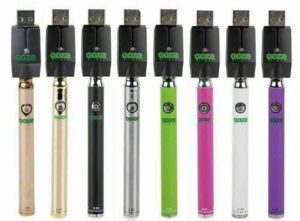Looking for information on Alabama Window Tinting Laws? You’ve come to the right place! Whether you’re a resident looking to tint your car windows or just curious about the regulations in the state, we’ve got you covered. In this article, we’ll delve into everything you need to know about Alabama’s window tinting laws, from the permissible tint levels to the potential consequences of non-compliance. Let’s jump right in and shed some light on Alabama Window Tinting Laws.
Alabama Window Tinting Laws
Window tinting is a popular choice for vehicle owners in Alabama, offering various benefits such as privacy, protection from UV rays, and enhanced coolness during hot summers. However, it’s important to be aware of the relevant laws and regulations regarding window tinting in Alabama to ensure compliance and avoid fines or legal issues. In this article, we will explore the Alabama window tinting laws in detail, covering the permissible tint levels, restrictions, exceptions, and enforcement of these laws.
Permissible Tint Levels
In Alabama, the darkness or lightness of window tint is measured by Visible Light Transmission (VLT) percentage. VLT refers to the amount of visible light that is allowed to pass through the window. The lower the VLT percentage, the darker the tint will be. The higher the VLT percentage, the lighter or more transparent the tint will be.
For Sedans, Vans, and SUVs, the Alabama window tinting laws allow the following VLT percentages for different windows:
1. Windshield: Non-reflective tint is allowed above the manufacturer’s AS-1 line or top 6 inches, with at least 70% VLT.
2. Front Side Windows: Must allow more than 32% VLT.
3. Back Side Windows: Must allow more than 32% VLT.
4. Rear Window: Must allow more than 32% VLT.
It’s essential to note that the VLT percentages mentioned above are for tint after market installation. Some vehicles may come with factory-installed tint that already meets Alabama’s legal requirements.
Restrictions and Exceptions
While Alabama has specific regulations for window tinting, there are some exceptions and additional restrictions to consider:
1. Reflective Tint: Reflective tint is not permitted on front windshields or front side windows.
2. Red, Amber, and Blue Tints: It is illegal to have red, amber, or blue tints on any window of a vehicle.
3. Mirrored and Metallic Tints: Mirrored or metallic tints are also not allowed on any window.
4. Medical Exemptions: If you have a medical condition that requires special window tinting, you may be eligible for a medical exemption. To obtain a medical exemption certificate, you must submit an application signed by a physician to the Alabama Department of Public Safety.
Enforcement of Window Tinting Laws
Enforcement of Alabama’s window tinting laws is primarily carried out by law enforcement officers during routine traffic stops or vehicle inspections. If your vehicle’s window tint is found to be in violation of the law, you may be issued a citation and required to remove or replace the tint to meet the legal requirements.
It’s important to note that ignorance of the law is not considered a valid defense if you are found to have illegal window tint. Ensuring compliance with the regulations not only avoids legal trouble but also promotes road safety by maintaining proper visibility for drivers.
Penalties for Non-Compliance
Failure to comply with Alabama’s window tinting laws can result in penalties. The specific penalties may vary based on the county or municipality where the violation occurs. Generally, consequences for non-compliance include:
1. Citations: Law enforcement officers may issue citations requiring you to pay a fine for illegal window tint.
2. Window Tint Removal: You may be required to remove or replace the tint to meet the legal requirements within a specified period.
3. Vehicle Inspections: Non-compliant window tint may lead to failed vehicle inspections, preventing vehicle registration or renewal.
To avoid these penalties, it’s crucial to ensure your vehicle’s window tint complies with Alabama’s regulations.
Choosing the Right Window Tint
When selecting window tint for your vehicle in Alabama, it’s important to consider legal requirements, as well as personal preferences and needs. Here are a few factors to consider when choosing the right window tint:
1. VLT Percentage: Consider the permissible VLT percentages for each window and choose a tint that complies with these regulations.
2. UV Protection: Look for window tints that offer a high percentage of UV protection to safeguard yourself and your vehicle’s interior from harmful rays.
3. Heat Rejection: If you live in an area with hot summers, consider selecting a window tint with higher heat rejection properties to keep the vehicle’s interior cool.
4. Tint Brands and Quality: Research reputable brands and check customer reviews to ensure you are purchasing a high-quality tint that will provide long-lasting performance.
In conclusion, understanding and adhering to Alabama’s window tinting laws is crucial for vehicle owners. By complying with these regulations, you not only avoid potential fines and legal issues but also contribute to road safety. Make sure to choose the right window tint that meets the legal requirements, suits your needs, and enhances your driving experience. Stay informed, stay compliant, and enjoy the benefits of window tinting in Alabama.
Frequently Asked Questions
What are the Alabama Window Tinting Laws?
In Alabama, the window tinting laws regulate the darkness of tint that can be applied to both the front and rear windows of vehicles. These laws are in place to ensure safety on the roads and to maintain visibility for drivers.
What is the legal tint limit for the front windows in Alabama?
According to Alabama window tint laws, the front windows must allow at least 32% of light to pass through. This means that no more than 32% tint darkness is allowed on the front side windows.
What is the legal tint limit for the rear windows in Alabama?
For the rear windows, including the rear windshield, Alabama law allows any darkness of tint to be applied as long as the vehicle has side mirrors that provide an adequate view behind the vehicle.
Are there any additional tinting rules for the windshield in Alabama?
Yes, in Alabama, only a non-reflective tint along the top 6 inches of the windshield is allowed. This tint strip should not extend below the AS-1 line, which is typically marked on the windshield.
Are there any medical exemptions for window tinting in Alabama?
Yes, Alabama does allow for medical exemptions to the window tinting laws. If a person has a medical condition that requires them to be shielded from sunlight or high-intensity light, they may be eligible for an exemption. However, this exemption requires a written statement from a licensed physician.
What are the penalties for violating the window tinting laws in Alabama?
If a vehicle is found to have illegal window tint during a traffic stop or inspection, the driver may be issued a citation. The penalties for violating the window tinting laws can vary, but typically include fines and the possibility of having to remove the tinted film.
Final Thoughts
In Alabama, there are specific laws governing window tinting for vehicles. These laws are in place to ensure the safety of both drivers and law enforcement officers. When it comes to window tinting, Alabama follows strict standards in terms of darkness and reflection. The front windshield must allow no more than 6% light transmission, while the side windows must allow at least 32% light transmission. Alabama window tinting laws also prohibit the use of mirrored or metallic films. It is important for vehicle owners in Alabama to understand and comply with these regulations to avoid any legal issues or penalties.



